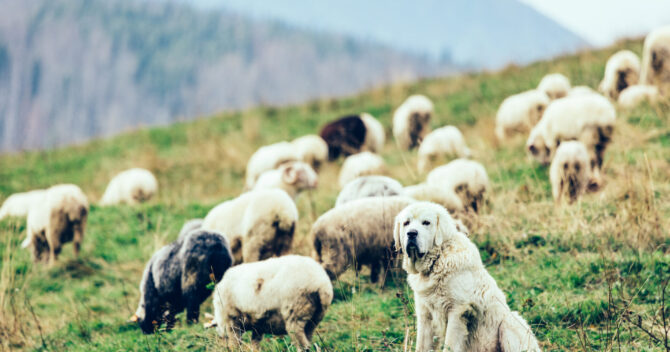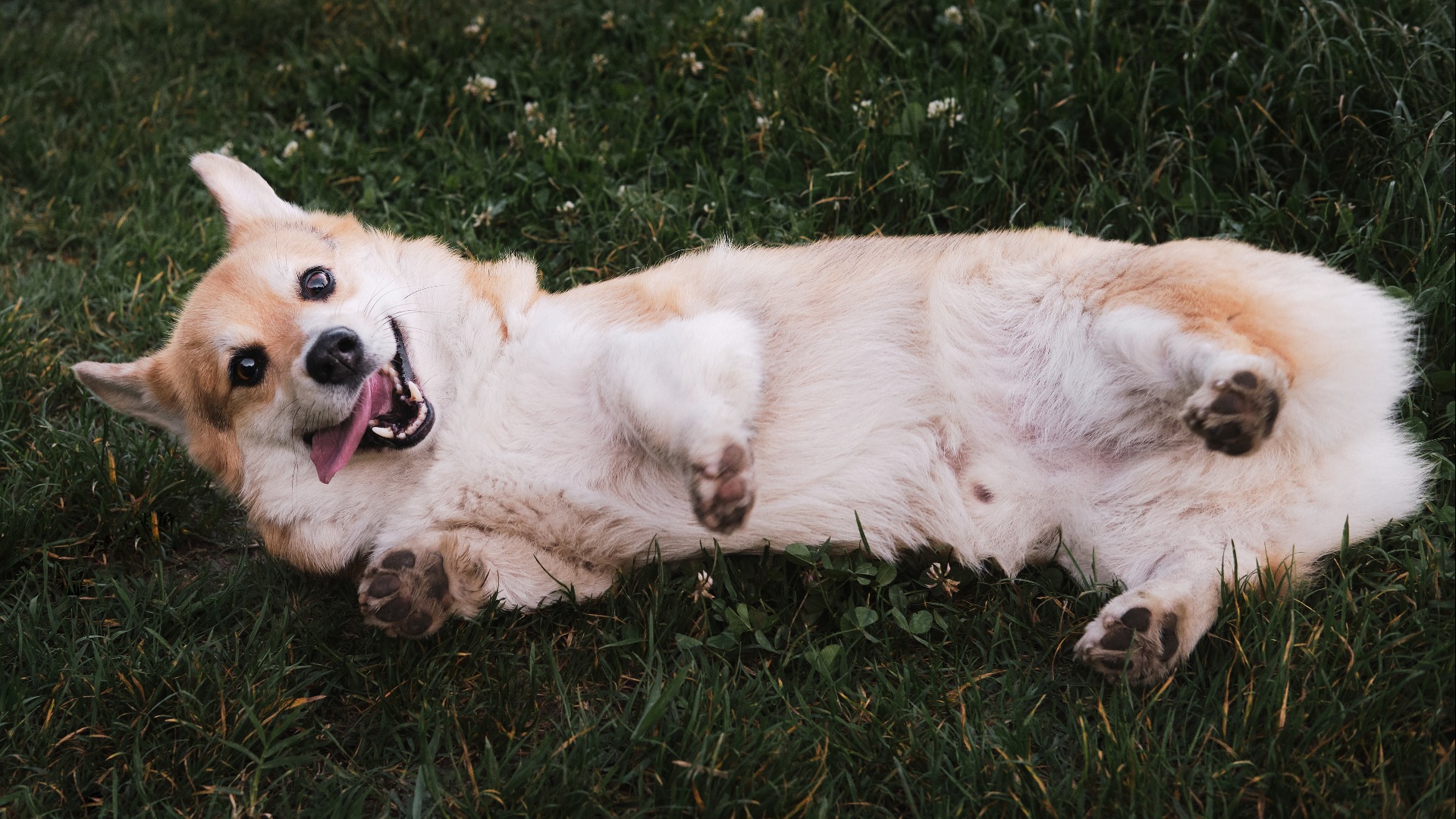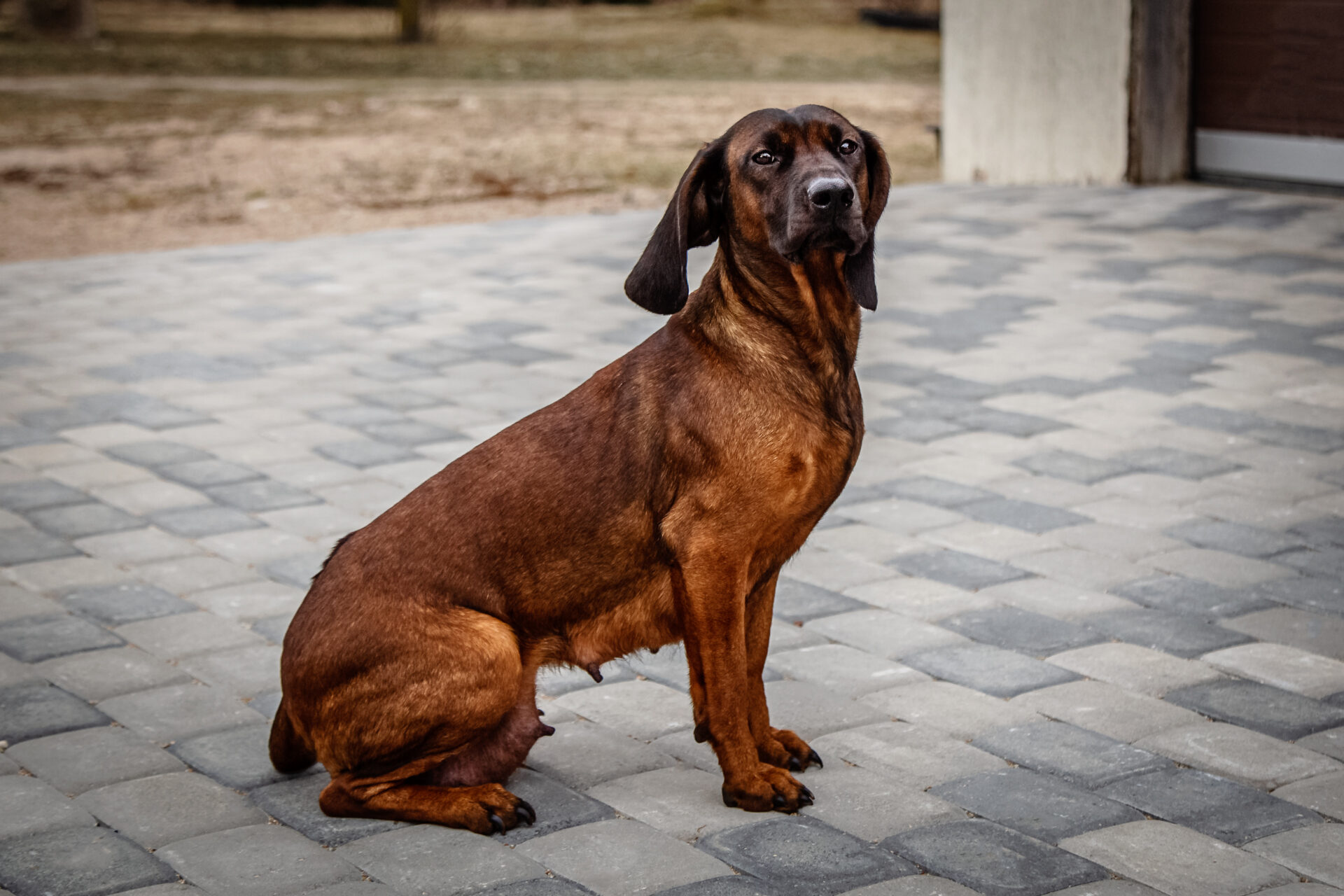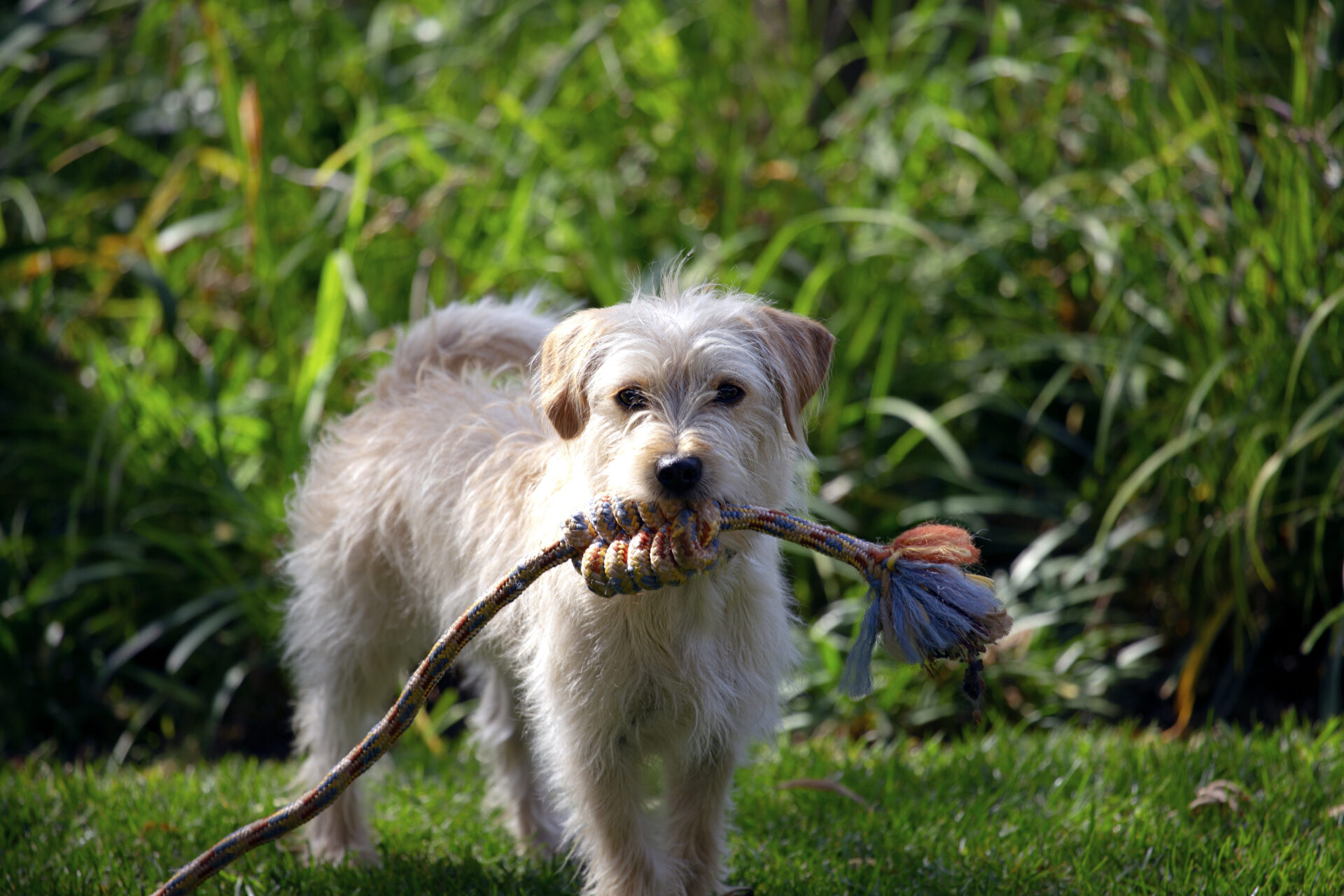Tatra Sheepdog and its character
The Tatra Sheepdog is known for his quickness and perceptiveness. This fearless dog, distinguished by vigilance and a strong protective instinct, is an excellent guardian and protector. He is distrustful and distant towards strangers. Shepherd Dog reacts only when there is a real threat. Without hesitating, he rushes to protect his loved ones, fights fiercely and persistently. He is alien to the feeling of fear and anxiety. Although he is self-confident, independent and often likes to make his own decisions, with a quiet, friendly and consistent upbringing, he becomes exceptionally obedient and cooperative. He builds a strong bond with his family very quickly. He is faithful, unconditionally devoted, friendly and open. He is famous for his patient and gentle approach to children, he likes to play with them, although he often decides to end the game himself. Properly socialized, he also takes care of other domestic animals.
The Tatra Sheepdog shows a great need for activity, is enthusiastic about swimming, walking and hiking (although not necessarily very long). She enjoys being outdoors, and passionately guards and protects her territory. The lack of an appropriate dose of exercise, activities and, above all, space adversely affects his mental and physical condition.
Suggested sizes and widths of accessories for this breed of dog:
Here are the suggested sizes for adult dogs of this breed. They were selected on the basis of many years of experience in sewing accessories and the most common choices of other dog owners of this breed. Remember, only measuring will give you 100% certainty - every dog is different.
Tatra Sheepdog - appearance
The Tatra Sheepdog, also called the Podhale sheepdog, is a strong, powerfully built dog. Its strong, compact silhouette provides it with high endurance, activity and efficiency. Males of this breed reach a height at the withers from 65 to 70 cm, female dogs are slightly smaller (60 to 65 cm). Generally these animals weigh between 45 and 69 kg. Shepherd dog has a long and massive body and a wide back. The tail is carried below the topline. The head is of proportionate size, the nose is black or dark brown. Medium-sized, slightly slanted black-rimmed eyes have a dark brown iris. The coat of the Podhale Sheepdog is long, dense and hard. The topcoat is straight or slightly wavy, especially long on the tail, collar and legs, and very short on the head and front feet. Thick, very dense undercoat guarantees the animal protection even in extreme weather conditions. The color of dogs of this breed is pure white.
Health
The Tatra Sheepdog is characterized by good health and condition. Most often, this breed is affected by conditions typical of large dogs: hip and elbow dysplasia. You should also pay attention to potential eye diseases, especially eyelid defects: entropion and ectropion. Possible threats are also the tendency to dilate and twist the stomach. Prophylaxis in this area is primarily associated with a properly selected diet. During the growth period, your dog should not be fed a high protein food as this can lead to joint problems. To prevent stomach torsion, it's best to feed your pet two or three times a day (in smaller portions) and make sure your dog rests after eating. As a sheepdog's ears are prone to infections, they should be checked regularly and cleaned if necessary.
Care
Taking care of the Tatra Sheepdog is not particularly demanding. The double-layered coat, consisting of topcoat hair and a very dense undercoat, does not get wet, dries quickly and is self-cleaning. A thorough, regular brushing, preferably once or twice a week, is enough for your pet's coat to look effective. Only during the shedding period should more time be spent on intensively combing the dead hair.
Tatra Sheepdog - the history of the breed
The Tatra Sheepdog, according to the FCI classification, is a representative of the group from which shepherd and dog breeds come. It belongs to a very old breed of mountain dogs, descended from the Tibetan Mastiff. Podhalanczyk is related to several European breeds of herding dogs, living in the mountainous areas of the Carpathians, Alps and Pyrenees. Among them we can find, among others, the Hungarian Kuvasz Shepherd Dog, the Slovak Shepherd Dog, i.e. dogs characterized by a strong, compact body, with a short hairy snout and a long coat on the body. By selection, strong, massive dogs, resistant to weather conditions, alert, courageous, calm, with a relatively high excitability threshold. In order to distinguish more easily from predators, only white-haired dogs were selected.
In Poland, the first attempt at planned sheepdog breeding was undertaken in the interwar period by the Border Protection Corps. It was decided that committed, hard-working sheepdogs for generations, resistant and willing to cooperate with humans, will be good service dogs. The Tatra Sheepdogs are perfect dogs for guarding industrial and military facilities. In the early 30s, the Service Dog Lovers Society was established in Silesia to popularize this breed. On his initiative, in 1937 the first exhibition of Podhale sheepdogs was organized in Zakopane. The pattern of the Tatra Sheepdog, originally established in 1937, was revised after World War II by the Polish Kennel Club (branch in Krakow in cooperation with the Jagiellonian University).
In 1955, over 100 representatives of Shepherd Shepherd Dogs, selected from the entire Podhale population, were inspected. Then the best specimens were selected and the breeding direction was indicated. In 1967, the FCI officially adopted the breed standard. The Scientific Council of the Kennel Club in 1972 revised the scheme, modifying it so that it corresponded to the actual dominant population in Podhale. Another change was made in 1985. The standard published in a standardized version by the FCI in 1988 is currently in force. The Tatra Sheepdog, which used to play the role of a herding and guard dog, today meets many lovers who appreciate it primarily as a wonderful family dog and a reliable four-legged officer.
Interesting and worth knowing
- The first Polish Tatra Sheepdogs were born in Łeba (1957). Although the first pedigree litter came from coastal breeding, Podhale remains the main base of this breed.
- The first Podhale Sheepdog Club in our country was established at the beginning of 1981. Its chairman for many years was an outstanding cynologist - Dr. Henryk Dereziński.
- The first Tatra sheepdog with full pedigree was a female named Surma from the Kordegarda kennel.
Maybe you'll like it:



